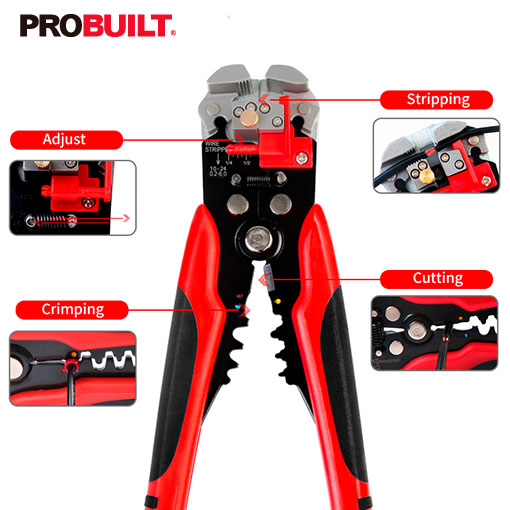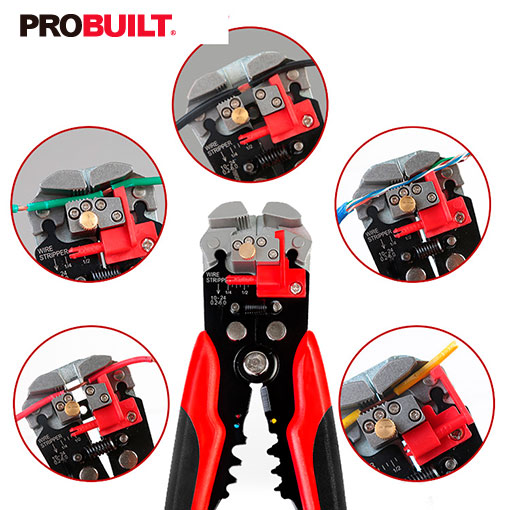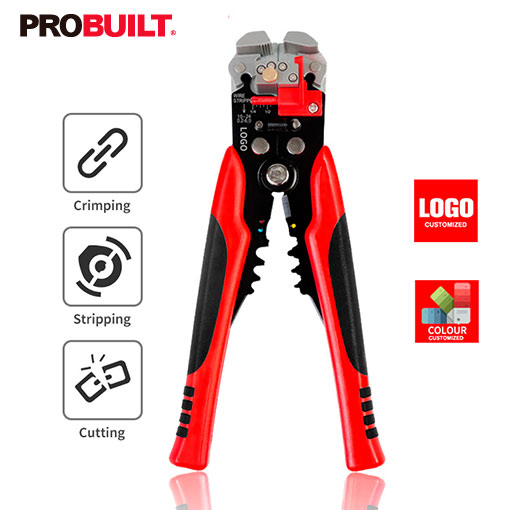+86 311 8533 5186
A wire stripper is similar to a pair of pliers or scissors. Most wire strippers are capable of many different tasks, but their main purpose is to strip insulation from the ends of wires. This is accomplished using slotted cutting blades located in the jaws of the stripper. The cutting slots are sized for various sizes of wire, but not for the wire's insulation coating, so when the wire passes through the slot, its insulation is left behind.
Wire strippers come in a variety of shapes and sizes and often have serrated teeth to help strip the wire. It is important to choose the correct wire stripping pliers for the gauge of wire you are stripping.
Wire strippers have a series of marked holes that match the specific gauge of wire for that stripper. When you insert the wire into the correct hole and squeeze the stripper handle together, it will cut through the plastic insulation precisely without damaging the wire.

First, select the appropriate stripping blade according to the thickness type of the cable. Place the prepared cable in the middle of the stripping tool's blade and select the length of the cable to be stripped.
Hold the cable stripping tool handle, clamp the cable, and slowly force the cable to slowly peel off the outer skin. Release the tool handle, and remove the cable, the cable metal is then neatly exposed outside, and the rest of the insulation plastic will be intact.

If you want to strip pliers can be used for a long time, in addition to the use of stripping pliers in addition to standard operation, but also need to pay attention to the following matters.
Do not use light pliers as a hammer or tap the handles of the pliers. If abused in this way, the pliers will crack and break, and the edges of the pliers will be chipped off.
Lubricate the pliers often, adding some lubricant to the hinge can extend the service life and can ensure the use of labor-saving.
Do not extend the length of the handle to obtain greater shear force, but should use the larger specifications of the pliers or wire cutters.
Do not put the pliers in an overheated place, otherwise, it will cause annealing and damage the tool.
Pliers can not be used on nuts and bolts, using a wrench would be better, and not easily damaged fasteners.
Ordinary pliers can not cut piano wire unless specifically have this function.
The rubber sleeve on the handle is to increase the comfort of use; unless the handle is specifically insulated, these rubber sleeves are not electrically resistant and cannot be used for electrically charged work.
Use the correct angle for shearing, can not knock the plier handle and pliers head, or use the plier's blade to curl the wire.
Goggles should be worn when cutting wires to protect your eyes.
Do not use light pliers to crimp hard wires. If you crimp too thick wires with sharp pliers' heads, the pliers will break. A sturdy tool should be used.

The rusty area of the knife mouth is cleaned with rust remover, and some lubricant is applied to the place of the rotating shaft to ensure the pliers can be used normally. If there is a breakage or other aspects of the problem, promptly carry out the corresponding repair.
Timely remove the iron chips wound on the plier's body to ensure smooth chip discharge.

Copyright © Sinotools Industrial All Rights Reserved.. Technical Support: